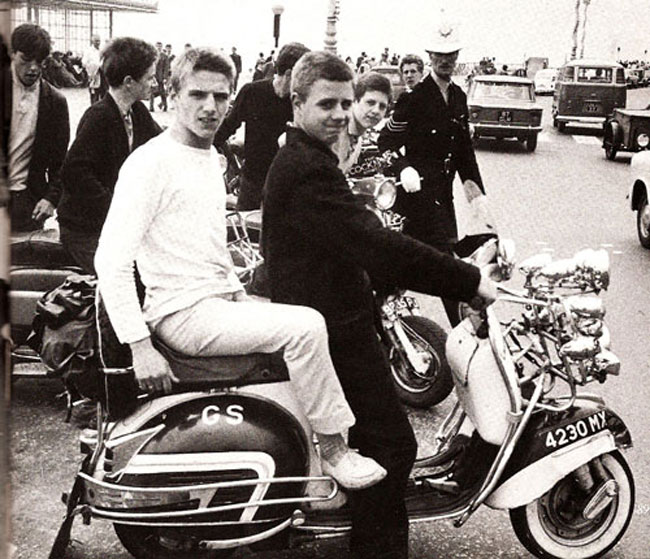
Doug Hadgraft speaks to Steve Barrow – original 1960s mod, reggae authority and founder of the Blood and Fire label about mod in the 1960s and the Jamaican music scene.
Doug Hadgraft writes…
‘I was first aware of the work of Steve Barrow, growing up in the mid-eighties via the scribes on the back covers of numerous ska, rocksteady and reggae LPs. Firstly the definitive ska LPs Intensified 1 & 2 and later in the decade when Trojan revamped their reissue campaign with a set of LP’s covering all genres of Jamaican music bar early mento. It wasn’t just the track listings that made this set enticing; it was the artwork design and educational sleeve notes.
We finally got to meet the man in person in the early nineties when Dennis Alcapone played a set in the old Twisted Wheel buildings on 6 Whitworth Street. Shortly after that, Steve was a guest on a Granada TV program talking to Stuart Cosgrove about fast-paced London life with jaunts down to the Flamingo club, doobs and black American music.
During the seventies he was involved in opening the first reggae record shop in the west end of London with Daddy Kool records and in the nineties, he dramatically changed the rules of the reggae and dub reissue market when he founded the fantastic blood and fire record label. Also finding time to author books and interview and video as many Jamaican artists as possible for his Jamaican heritage archive project. The new century has seen Steve tour the world as the selector on the blood and fire sound system to much acclaim.
Predictably I’ve bought every B & F release and even the proverbial T-Shirt but it wasn’t until the Tapper Zukie release, where there is a photo of Steve and Tapper Zukie in 1974 when it dawned on me, enviously, that this man has always been at the heart of what he loves and I suspected that this man had really retained one of the ethics of his youth ‘always look forward, never look back’. In a recent discussion on the Modculture forum on ideas for interviews, it was no surprise to me that Steve Barrow was the name repeated the most.’
Steve, thanks for taking time to reminisce, just to start off, where did you grow up and what are your earliest memories of music? Do you remember when you first got bitten by music?
I grew up in Manor Park [E12], at the far eastern end of London, just next to Ilford, which is in Essex. I was born in Forest Gate [E7], about a mile away from where I lived, but we moved to Manor Park early on in my life and I stayed there until I was 18 or 19. That’s when I moved out of my parents’ house. My childhood, it was during what they call the post-war ‘austerity’ period. Thick fog in the winter, not many cars down my road, ration cards, not much money about.
We played on bombsites and in the streets, walked everywhere, went to Saturday morning pictures, attended big old Victorian piles of schools that had been built in 1889 or whenever. It was a typical London working-class area; the nearby docks and big factories like Tate & Lyles were all in the southern part of the borough where I lived.
Fords Motor Works was just down the road in Dagenham. Most people I knew worked in those industries, or depended on the people who did – my dad was a butcher, my mum was a housewife and part-time cashier in butcher’s shops. We didn’t get a TV until I was 8 years old in 1953. We had a radio though – I remember hearing the variety show ‘Workers Playtime’, and ‘Two-Way Family Favourites’, a request show for ‘British forces posted overseas’. It probably sounds a bit grim compared to what’s around now in terms of consumer goods, but I enjoyed it.
I guess I first became aware of music as a thing, in the sense of records, in the very early 1950s, when I was a little kid, maybe 5 years old! My mum and dad had an old windup gramophone in the house where I grew up; this would be around 1950. Anyway, I was fascinated with this is a young kid, endlessly playing and winding the few discs we had.
One was ‘Woodchoppers Ball’ by Woody Herman. I remember this because I used to call it ‘Woodpeckers Ball’ and I always used to get corrected. Woody Woodpecker was a character I’d either seen in the cinema as a cartoon or maybe an American comic, which were precious objects in those days. I had family in Canada who sent us parcels of comics and magazines like the Life, Saturday Evening Post.
I also had an older cousin, 3 or 4 years older than me. She was a movie fan, and when she became an Elvis fan, she gave me some records which she’d lost interest in – one of them was an EP by the Chris Barber Skiffle Group, and it had Lonnie Donegan singing ‘Rock Island Line’. I immediately fell in love with that song – I was 11 going on 12. By this time I was going to East Ham Grammar School. This was a school where people got selected by passing an exam called the 11-plus. We were supposed to be the brightest working-class kids in our area.
It was a school that tried to get us involved in a whole range of activities in after-school hours, probably to keep us from hanging around on the streets where we lived like all my friends who’d gone to Secondary Modern school, i.e. they had ‘failed’ the 11-plus. Anyway, to cut a long story short, they had an after-school jazz club where one of the masters would play records and talk to us about the history of Jazz, from Louis Armstrong and Jelly Roll Morton thru to Charlie Parker, Brubeck and Mulligan, the latter two being very big on the scene at that time.
We were encouraged to take in our own records [if we had any] and I took in my Chris Barber/Donegan EP. Most of the other guys laughed and said words to the effect that ‘This stuff is just copying old-time American ‘originals’, like Leadbelly’, and from then I was starting to get hooked on jazz. I had a paper round for 10 shillings a week and 5 shillings a week pocket money off my Dad. I also worked on a Saturday, naturally in a butcher shop, delivering meat on a bicycle and cleaning out the big mincing machine. But it gave me money to buy records.
Every month I could buy an LP, or maybe three EPs. LPs then, in the late 1950s, cost around £1.60 [32/6d in ‘old money’]. And so I became a teenage jazz fan. I borrowed books on Jazz from the library, like Rudi Blesh’s Shining Trumpets and one called Hear Me Talkin’ To Ya, all interviews. All my spare money, Christmas or birthday presents from aunts or uncles etc, I always asked for ‘record tokens’, and so by the end of the 1950s when I was 15 and in my penultimate year at school, I had maybe 40 or 50 LPs, and a clutch of EPs too. I even have one or two left from then, in 2006. So, I have to thank my cousin Iris for that!
How did this evolve for you? Before long you were going to west end clubs, was it something that was developing in the area you lived or did you have to seek it?
As I said, all my mates from the streets around where I lived went to the secondary modern school. They could all leave school at 15 and get jobs. I didn’t leave school until 1962, a year later than my mates. But I still hung out with my ‘homeboys’ at weekends. And from around 14 or so, we would hang around where the girls were, in the shed down the local park, or just when they were walking down the street or yes, going home from school! We also just ‘learned’ quickly that you had to dress in the latest styles to impress the girls, and if you didn’t impress them, then, in turn, you weren’t going to satisfy the new desires, the hormones, that had begun to make themselves felt – in more ways than one, so to speak.
I didn’t have the money to buy clothes, but I was trying to get my mum to alter my best pair of dark grey school trousers that could pass for ’non-uniform’ at a pinch in the dancehall situation and had saved up to buy a pair of ‘chisel-toe’ Oxford-style shoes from a shop called Denton’s in East Ham High Street. That had all the short points, side laces, and even winkle-pickers still, but they were the shoe shop of choice at that time in my ‘manor’.
My first ‘dancehall’ while I was still at school, was the Ilford Palais Saturday afternoon sessions, which instead of having a band like Ray McVay‘s, they played records over the house PA. So you’d hear the top chart tunes of the day, the danceable stuff rather than the ballads. Records like Dion’s Runaround Sue, Del Shannon’s Runaway, the Shirelles Will You Still Love Me Tomorrow, Gary US Bonds Quarter To Three, the Marcels Blue Moon, the Tokens Lion Sleeps Tonight, Barbara George’s I Know, all the Twist records and things like the Dovells and Orlons, all those Cameo-Parkway pop/r ‘n b type things. And my hero Ray Charles, with Hit The Road Jack.
I remember hearing all those records either at the Ilford Palais or at other places in my area, like the All Saints Hall at Manor Park, or the place above the Art Deco furniture store that used to be in Woodgrange Road, Forest Gate, the ‘Lotus’. Opposite the Lotus was the Uppercut Club, owned by the Walker Brothers [boxer Billy and the other one, who became the Walker in City financial company Slater-Walker ] The Upper Cut later became the Jack Of Diamonds Banqueting Suite before being demolished a few years back to make way for a vent/chimney for the Eurotrain tunnel running below it.
Of course, I was into jazz still, so a lot of this stuff was just pop to me, but the main thing was you could at least look at girls for 3 hours between 3-6 pm on a Saturday afternoon even if you didn‘t manage to get off with anyone. Sometimes, you‘d end up going home to a girl‘s house, and get some kissing and maybe a bit more, on the doorstep before her parents called her inside. But the Ilford Palais was full of them, it was a highlight of the week, seeing as at that time I wasn’t allowed out all night yet. As I say, I was 14 going on 15.
There were also ‘coffee-bars’ where you could hang out. One was in Manor Park, and it was called the “Square Ring”. It was what these days they would call a theme bar, with pictures of boxers on the walls. I remember that Steve Marriott used to hang out there; at that time he wasn’t a musician or singer – he was an actor, and had appeared on the stage as well, – at least, he said he had.
Near to the Palais in Ilford was another coffee bar, called the ‘Mocha’. It was a mostly a ‘greasers’ [i.e. motorbike guys, aka ’rockers’ ] hangout, but they had a great jukebox, with loads of bluesy stuff I hadn’t heard anywhere else. They had Ray Charles on the jukebox there, What’d I Say parts one and two, and an instrumental by him called Rockhouse. At that point, I had moved on from ‘old’ jazz [New Orleans and Swing, early Bop], to the current sounds of the late 1950s. The reading room of the library in East Ham had Jazz Journal and Jazz Monthly; I read them avidly, every review, every article – the former also published tantalising lists of record releases in America. Mostly jazz, but also some blues or ‘R & B’ releases, on labels like Chess, Federal and King.
They were a matter of intense speculation for me, as to what they sounded like because I didn’t know anywhere I could buy them in London. But I could hear some tracks on programs on the radio, on Radio Luxembourg or AFN [American Forces Network]. And you could turn the dial to stations like Hilversum in Holland and sometimes get a jazz or blues program, or at least a DJ that occasionally would play something by James Brown or Bobby Bland, as well as Ray Charles and Sam Cooke. At that time, I liked that stuff because, as well as the singing, there were instrumental solos, tough tenor saxes or organ or guitar, so for me, it was still connected to jazz.
When I was 16, I left school, in July 1962. I got a job doing messenger work in the City of London for an insurance broker. It gave me the sum of 8 guineas a week. A ‘guinea’ was an archaic word then still in usage and it was worth 21 shillings [£1.05p in today’s money]. It was really only used then to describe wages, or certain prices, like say a suit – so you would get a ’ten-guinea suit’ from [Montagu] Burtons, the tailors. They would do you a made to measure for that price, with two fittings!
I also discovered other small tailors – there was one near Manor Park Station called H. Cave and Sons, two old guys, brothers in their seventies, but they could really cut cloth well. I had two suits made there in 1962/3. One was a blue/purple Dormeuil ‘Tonik’ mohair two-piece [jacket and trousers, three-button jacket, very slightly waisted but still a bit ‘boxy’, so it would hang well at the back, with trousers that had two pleats at the front. Still quite tight across the seat of the pants, you couldn’t pull more than a half-inch away from your backside.
The trousers had straight legs from the knee down and 18-inch bottoms, with a smaller than ’normal’ turn up. I also had a blue mix ’salt and pepper’ Donegal tweed, a fine rather than a thick, heavy material; it was a three-piece, with a waistcoat that was cut off straight level with my waist, and with very thin lapels. I also had an overcoat made there, a really soft blue worsted, box-cut with a half-belt in the back.
This was the time that I began to find out about clothes shops in the West End of London – places like Cecil Gee’s and Austins in Shaftesbury Avenue, and a suede and leather shop called Gaylord [!]. And Carnaby Street, which definitely wasn’t a tourist hot spot then. There was a place down Brick Lane that did shoes made to measure – they also had a shop in Battersea, but I can’t remember the name. And later on, in 1963, there was a tailor on Bishopsgate called Bilgorri’s. You could check these places out when you worked in the City.
Being a messenger meant that you hung out around the Stock-Exchange all day, picking up a pouch of documents in the morning and then picking up another lot in the afternoon, but you were pretty free to deliver them as quick as you like. This made lots of ‘free’ time to just check out clothes shops, or James Asmans Record shop in a basement just off Bishopsgate [ they had London-Atlantic ‘deletions‘ at 60 pence and £1 each there].
There were shops where you got just trousers, like Harry Myers in Bethnal Green – they had tailors on the premises to take up the bottoms of the legs to fit you, or any other alterations, any kind of material, Prince of Wales check, dogtooth check, cavalry twill in three shades, various worsteds & blends.
I knew about that shop when I was at school, 15 going on 16. One of our crew in school got a pair of black trousers, no pleats at the front, with a 1-inch step at the foot of the trouser leg that went halfway down his heel at the back, almost touching the floor, and the front half of the trousers had a button on the outside leg side, cloth-covered in the same material and sewn at the point where the step began, hung just right over your shoe. He used to wear a pair of short-point side laces with the heel a little bit ’Cuban-style’ with these trousers.
The other thing I got that autumn, on ‘hire-purchase‘, was a scooter; a metallic silver-grey Vespa GS, 160cc. Many of my mates in Manor Park and East Ham had them in the autumn of 1962, and when I turned seventeen in September ‘62, I dragged my dad down to the shop and he signed the agreement for me.
At that point, it wasn’t considered smart to have all the carriers and crash bars, aerials with foxes tails, mirrors – that came later. We just had the scooter, and maybe you had double chrome pipes fitted to the exhaust, so you would get a deep popping sound when idling, buts still get the whine in the engine. You only got that whine with the GS. It wasn’t on the Vespa 125 or the 150 Sportique.
I used to give my mum £1.50 [thirty shillings] a week for ’board and lodging’ and I had almost £7 a week to spend. I could buy clothes and records. I had also started smoking cigarettes too – I used to smoke ‘Guards‘, with filter, though I later moved on to ‘Strand’ and ‘Piccadilly’. Yeah, I know – but I thought it looked grown-up, cool, like all my jazz heroes, with smoke curling around their sax or trumpet.
I had a feeling you were from Manor Park and prior to asking that question I did wonder if Steve Marriott had crossed your path. His career being well documented now, I guess maybe he was referring to his stage part in Lionel Bart’s ‘Oliver’ or was still at the Italia Conti possibly??
Yes, this was before 1962, must have been 1960 or 61 at the latest.
But staying with Manor Park, in one of Steve’s later songs for the Small Faces, ‘Rene’, he recalls the exploits of a very hard working lady called Rene Tungate. She lived on Strone Road in Manor Park ‘a docker’s delight…with a kid of every shape and colour…’ Am sure Steve’s parents lived on Strone Road, she must have been one of many local characters whilst growing up around Manor Park.
Strone Road – it’s funny, my uncle & aunt – also name Rene [ but not Tungate!]- lived around the corner from Strone Road in Katherine Road. And years later, Bunny Lee told me he lived down Strone Road while he was visiting the UK for the first time in 1967. And so, he named a Val Bennett tune ‘Forest Gate Rock’ – it’s on one of those ‘Jamaica Gold’ reissues that appeared a few years back! So Strone Road is famous for two reasons!!
Thank you very much for sharing the low down on your tailors, the suits and the blue worsted overcoat sounds like gorgeous pieces of kit.
I wish I had some of these clothes today!!
What clubs did you frequent during this period? What would be a typical week?
The autumn of 1962 was a crucial time for me; not only did I have money to spend on clothes and records, but I also started going up the ‘West End’ of London, to various all-night sessions at certain clubs, in the autumn of 1962. By Christmas, I had been to clubs like the [La] Discotheque, the Flamingo [both near to each other in Wardour Street below Shaftesbury Avenue], and the Roaring Twenties in Carnaby Street.
Those were the three main ones for me between 1962 and 1964 when I more or less stopped going ‘up West’. There were other clubs too, either ‘before’ going to one of the all-night sessions, or ‘after’ – ‘before’, I used to go to the Limbo, which was at the end of D’Arblay Mews in a basement. They also had a coffee bar upstairs on the top floor. One reason was that you could always get something there.
(That was the place where I found out you could score ‘doobs’ [aka ‘purple hearts‘] and ‘[black] bombers’, both of which were a mix of speed and barbs. You went up and then came down later…… I remember that you could get 10 purple hearts for 5 shillings [25p], or separately at 6 pence each [old money]. I started taking 10 every Saturday night to stay awake and dance [and get the fabled ‘buzz’!] from around the beginning of 1963.
That was the time that I started going to the Flamingo All-nighter, which started at midnight and generally turned out around 5 am.). It [the Limbo] was down a mews, off-street, discreet. There were plain-clothes cops, but in a club like the Limbo, it was relatively safe – if someone asked if you wanted anything, you could reasonably expect that no plainclothes police were in the club at that time!
The main ‘after’ place I used to go that autumn after the sessions, was another coffee bar in Rathbone Place, north of Oxford Street. Another good jukebox, can’t remember the name – it could have been the Calypso or Kalypso – as you can see, the Caribbean connection is definitely there too!
When I started going to the All-nighter at the Flamingo instead of the Discotheque I stopped going to the place in Rathbone Place. We used to leave the Flamingo in the morning and if we didn’t go to the [Roaring] Twenties in Carnaby Street, we’d walk down to Fleet Street. There was a cafe there called Mick’s ‘Caff’, a 24-hour place with printers and cab drivers as main clientele, plus a big contingent of clubbers and party people too.
Upstairs, out of sight of the counter downstairs, you could take another five ‘blues’ [aka doobs, purple hearts] and head for the zombie zone……after that, we’d stumble over to Petticoat Lane, and sit on the low wall opposite Tubby Isaacs stall at the bottom of Wentworth Street – by then it was 7 or 8 am. You’d watch all your fellow clubbers straggle up there. Maybe some had been down the Scene or other places, but the Lane was a definite meeting place for anyone who considered they were ’modern’ at that time.
Anyway, that autumn a typical Saturday might run like this for me: I would maybe go to Ilford or Whitechapel in the day, maybe buy some item of clothing. When I had the scooter, I would maybe go to the big scooter shop/showroom opposite the White Horse pub in East Ham, Eddy Grimsteads. I would meet my mates there and we’d drive off somewhere. Maybe we’d go to the Army & Navy Stores at Manor Park Broadway. Or out to High Beech in Epping Forest. At some point late in the afternoon, get back home with whatever you’d bought and get ready for Saturday night. It definitely was a ‘weekend‘ thing – Monday to Friday was work, Friday evening the weekend kicked off. – it was simply what you did.
Of course, sometimes you couldn’t go out – no money. It’d be like the Sam Cooke record:
‘Another Saturday night when I ain’t got nobody,
I got some money cos I just got paid….’
I’d sit in, usually with mates in the same situation, and play records, talk, play cards, whatever. Better yet, you could try to get around a girl’s house, take a couple of LPs and try to get off with her. As you do.
But if I was going out, sometimes I ’d start out at the local dance in my ’area’, so I used to go to All Saints Hall in Manor Park, where I’d been going since around 16 years old, leave there around 11 pm, get a train and head for the West End. Get off at Leicester Square and walk along Lisle Street into Wardour Street. As you come to the junction, you could see [on the other side of Wardour Street] a doorway which led upstairs to the first floor, which was where the [La] Discotheque was.
Originally, I think this club had been a hangout for a French crowd, but by the time I started going, it had been more less taken over by ‘locals‘ mostly like me from a generation that hadn’t known war, or National Service. We wanted to have some fun on the weekends, and we headed to the West End from all over London, outer and inner suburbs.
Go up the stairs off the street, and the club was on the first floor. There was a cloakroom on the second floor, where in late 1962/early 1963 a guy called Mark Feld would take & hang your coat – and there was a gambling club on the third floor. Mark Feld used to tell people he was going to be famous; he’d already been featured in a spread in a men’s fashion magazine called ’Town’ along with some ‘faces‘ from Stamford Hill, who used to hang out at the Tottenham Royal, the N17 version of the Ilford Palais. Later he changed his name to Marc Bolan.
The Flamingo was a straight-ahead Jazz club until midnight. After midnight was the All-nighter. They played records, but the main attraction was the live band[s]. The main one was Georgie Fame and the Blue Flames, supported by outfits like Tony Shevington and the Chevelles, Zoot Money’s Big Roll Band, Chris Farlow & the Thunderbirds, Ronnie Jones and the Nightimers, and an early version of John Mayall’s Bluesbreakers.
Most of these I liked a lot, although I wasn’t that keen on Tony Washington & the Chevelles or John Mayall. All through that period, singers would come in and ‘sit-in’ with Fame. In this way, I saw Elkie Brooks, Long John Baldry, Herbie Goins and Ronnie Jones. These were the hippest of the singers I remember. Even Geno Washington before he got his Ram jam band [which was named for the club in South London where he built his following]
At the Flamingo they played good music too, in between sets. The deejay there and at the Discotheque both played You Can’t Sit Down 1 & 2 by Phil Upchurch, all those Sue Records that Guy Stevens reissued. I remember too, that the last tune of the night at the Discotheque was The Party’s Over by Frank Sinatra – that’s definitely true! At the Flamingo, they played tunes like the Willie Mabon series that includes Got To have Some and Just Got Some and instrumentals like Mongo Santamaria’s Watermelon Man. James Brown’s Night Train too, a big record and Aaron Neville’s Tell It Like It Is.
The rest of the week, Monday – Thursday, maybe you’d occasionally go out, but really for me and many others, I think it was a weekend thing. So, stay at home, listen to records, study jazz magazines, occasionally look at TV, but the TV wasn’t so big in my life then as it seems it is for many nowadays.
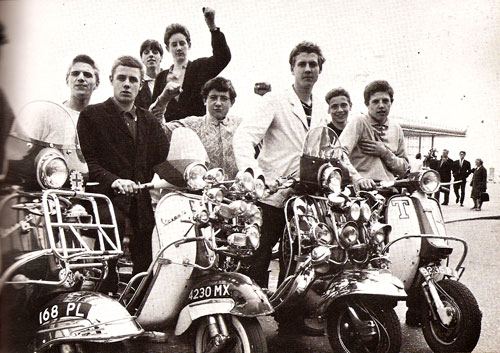
Mentioning Guy Stevens, any lasting memories of the Scene club? What was in like inside? Any memories of Guy DJing?
All I can say about the Scene is this; I remember a night, either when it was actually opening, or shortly after it had opened, although my memory is hazy. But this particular night, they had a live group, just starting to break into the Top 20 chart – the Animals. I definitely remember going round to Ham Yard, where the Scene was located that night and standing outside and hearing this group playing.
That night I never went in – I preferred the Wardour Street scene, where you could get a pass out from the club and the street was there. At the Scene, people would be in the Yard all night. Ham Yard was off Windmill Street; the street was out of sight from the club entrance. At least, that’s how I remember it.
Plenty of people I knew went there though, people I later got to know later on in the 60s. That night with the Animals, I distinctly remember they played a version of a Timmy Shaw early soul tune called Gonna Send You Back To Georgia. The Animals did it as Gonna Send You Back To Walker and it struck me as some sort of deviation from the original. I guess that is what they call ‘catholic’ tastes, but I’m not a believer in religion then or now. So I went back around the Flamingo or wherever I was that night.
Guy Stevens – I used to see him out and about in the west end sometimes – mainly because I used to visit record shops in the area, and there were only a few places where you could get say, US imports. There was a guy who had a stall at Cambridge Circus, through the sixties and early seventies, selling records – promos, imports too. I occasionally bought LPs there and I used to see Stevens there too, buying records off him. But I never knew him, nor did I hear him play in the Scene.
But the first shop that I remember importing soul from the USA was called Transat Imports, located in a bare basement in Lisle Street. This was early 1962 perhaps. They had all the stuff on labels like Duke, Chess, King, as well as music on a label from, say, New Orleans as well – that basement was where I saw Barbara George‘s album on AFO for example.
I think he also carried 45s too, but I used to buy the albums. I bought It’s Alright by the Impressions, Bobby Bland’s Call Me, James Brown‘s Showtime on Mercury about a week after it came out in the US. This music was the new thing at the time in the US R&B chart, which you could read in Billboard magazine, available at all the import Newsagents shops in Soho. Of course, there was Dobells jazz record Shop at 77 Charing Cross Road – that’s where I got my first Blue Notes. 52/6d old money, £2.65 now. At that time I earned maybe £10 a week, so a Blue Note was a quarter of my wages that week. Imagine spending a quarter of your week’s wage on an import CD now.
For many of my generation, tales of buying Impressions 45’s and Blue Notes at time of release, sparks a genuine smile but must laugh and tell you it’s probably followed by teeth slightly gritted in envy at not experiencing the satisfaction of purchasing such aural and visual treasures when new and relatively fresh from the pressing plant. I definitely didn’t appreciate the cost of a Blue Note LP at time of release, the thought of spending a quarter of a weeks wage on today’s equivalent of a new jazz import CD would be incredulous. However, some things haven’t changed,…rest assured one can still spend a quarter of a weeks wage procuring a desirable first press NY Blue Note. Easy.
Yes, I was looking at the ‘Paris Jazz Corner’ website recently, I saw a Sonny Clark Blue Note on there for a set sale price of 400 euros. I saw his Time LP on eBay after the auction had finished, and it had sold for $1200! So by that reckoning, £400, that’s about a weekly wage these days, before tax. Which means that Blue Notes are better than money…….
I can see now, you were definitely a Wardour Street/Flamingo club guy. Perhaps Georgie Fame’s Rhythm & Blues at the Flamingo LP is the best document available today for an insight to what that club was like. Does it capture it well?
I think it does, but I was actually there the night it was recorded! It wasn’t a regular night, it was in the week, not at the weekend. All those tunes on the LP, Georgie did regularly in his Saturday night sets [well, Sunday morning really]. After midnight. You can hear one or two of the regulars on there – one guy called Vince, he used to laugh by hissing through his teeth, like ‘ssss! ssss!’, and people did really shout out ‘Nice!’ during Georgie’s sets.
To me, that was the closest to the US ‘organ combo’ scene that was possible in 1960s England. The repertoire was jazzy r&b, with a little bit of ska occasionally. All this was in 1963-4, way before Yeh Yeh became a chart hit. That tune – like several others in Georgie’s repertoire was on a Lambert / Hendricks / Bavan LP, ‘At Newport’ – I bought that LP myself in Dobell’s, same with the ‘Golden Days’ LP by King Pleasure. Georgie Fame did his versions of all the jazz singers – Pleasure, Mose Allison, Oscar Brown, Jon Hendricks. Songs like Moody’s Mood, Work Song, If You’re Goin’ To The City, Gimme That Wine.
He did a version [of James Brown’s speeded-up version} of Night Train, and Louis Jordan’s Let The Good Times Roll which had also been covered by Ray Charles in the late 1950s. And he did Rufus Thomas, whose Walking The Dog was a massive club tune. So Georgie would sing these type of songs and he’d even do versions of other tunes that were played by the deejay in the club, like Willie Mabon’s Just Got Some. And he and the musicians would solo – he had two saxes, tenor and baritone, trumpet, guitar as well as organ.
I can’t remember all their names, but Michael Eve was on tenor sax, Eddie Thornton on trumpet, and Speedy on conga. He had a baritone sax player too, who would also solo. That band was great, and sounded like the ‘real thing’. It was definitely not a guitar beat group, but a band with horns – that was pretty much unique on the club scene then. I remember that the Who played in a basement in Gerrard Street, must have been 1963 or early 1964, no later, and you could hear from outside that they didn’t have any ‘horns’, or organ, just guitars, so I never went in to hear them!
Growing up in Manchester, in my mid to late teens, we used to drink in the old pubs of Manchester, down Ancoats and the top end of Oldham Street. It was not uncommon on a Saturday afternoon to bump into an older boy with tales of the Twisted Wheel. I guess our jukebox choices used to drag them out. One thing I noticed is they all seemed to reminisce about the same characters. Going to the Flamingo week in, week out, must have been the same, any characters that only attendees of the flamingo would know?
Well, that guy Vince for one. I remember a girl from Mile End, called Marcel, short, ‘mixed-race’, she was always around. As for the Wardour Street types – like say Scruffy Pete or Mad Sheila – they wouldn’t be allowed in. The Flamingo wasn’t really a pills scene, more drinking and weed. But you couldn’t smoke inside – although when it was really crowded, you could still smell it. But Georgie Fame used to play two sets, and you go out and have a smoke in the back streets of Covent Garden between sets…..
This is a question close to my heart, everything you have said so far must have been so exciting for a modern kid in post-war Britain. But amongst all this, can you remember hearing a Jamaican ska record for the first time? What was that like?
Yes, as I said, the first Jamaican stuff I heard was down the Limbo and the Discotheque. It was Derrick Morgan [Sea Wave, Housewives Choice], Eric Morris [Humpty Dumpty, In and Out The Window}, Prince Buster [They Got To Go] and the Folks Bros [Carolina]. I remember buying, just because it was on Blue Beat, Rico’s Luke Lane Shuffle, that must have been early 1963. 31 years later, I walked down Luke Lane with Prince Buster!!
As for what it was like, it was like hearing jazz or blues for the first time, like, ‘What is this?’ I even went and asked the deejay in the Limbo, and he said that it was ‘r&b’. Of course, this was just before ska proper, which came here in the latter part of 1963 with records like Madness by Prince Buster. The whole club used to sing along with these records, like with the chorus on Humpty Dumpty, or indeed ‘Madness’ itself.
I asked that question to determine the start of your life long affection for J.A. music, obviously, with Ska, the Jazz connection is virtually instant. It must have had a profound experience on you, especially hearing giants like Stranger Cole, the Skatalites, Derrick Morgan, Justin Hinds, and Cecil Bustamente Campbell for the first time. Are there any records from those first days that have stayed with you and invoke memories of these modern times?
A lot! Like the Buster tunes – Madness, They Got To Go, They Got To Come, Blackhead Chineyman, Enjoy It, Down Beat Burial. Jimmy Cliff’s Miss Jamaica, and Hurricane Hattie, with the odd harmonica solos [by Charlie Organaire]. Slightly later on, the Skatalites tunes, and Carry Go Bring Come. And many more which I forgot until I heard them again years later…..
Good to hear that the whole club used to sing along, similarly for me, I’ve always viewed ska as the original party music and the appeal does appear to be timeless. Down Beat Burial is still firmly in my record box, that and its second cut. I see you have already mentioned The Roaring Twenties on Carnaby street, was this when Duke Vin was in residence? What was it like inside? Where was the best place to buy this kind of music?
Yeah, I think Vin did deejay down there, as did Lloydie [UK] Coxsone early on in his career. Count Suckle was down the Flamingo, and later he opened the Q Club in Paddington, which became another ‘after-hours’ place, i.e. after Saturday night/Sunday morning, you could go to the Q club.
I used to go to a dance at Stoke Newington Town hall, also Stratford Town Hall – these were on a Sunday afternoon starting early and finishing on Sunday evening. It was a black crowd at these dances – on the occasions I attended, I was the only white guy there, though there were a few white girls with black boyfriends.
As for buying the music, I first bought a Jamaican recording from a shop in Stratford – it wasn’t even a record shop, it was an ironmonger, sold nails, screws, paraffin for heaters. But they also sold a few records too, you had to request the box and look through it on the counter. Anyway, somebody told me about it, and I went down there and got Housewives Choice, and Humpty Dumpty, the records I’d heard when I first went to a ‘west end’ club.
That must have been the end of 1962. The Housewives choice cost 7/6d, and guess what – it didn’t even have a label! The Blue Beat and white Island were I think 4/6d. That’s 22 and a half pence in today’s money. Then I found out about this other place, a stall in Whitechapel market outside the station. It was called ‘Paul’s For Music’, and they sold all the Jamaican UK releases, Blue Beat, Island, Planetone, R&B [Rita & Benny].
I found out that the latter records came from a shop in Stamford Hill, on the big crossroads up there, and the shop was called R&B after the people who owned it, Rita and Benny [King] and I eventually found my way up there too. So in 1962-63, these records were not particularly easy to find…..I remember that the R&B shop was the only place where I was able to get the Blue Flames singles that they themselves put out. It’s still a source of regret that I left those records in a taxi one morning in the mid-1960s, along with several other ‘rare’ and highly-prized LPs…
Hmm, I have a few record horror stories I could share with you…maybe when I see you!! Incidentally, what barnets did you and your pals go for?
For a time – in 1962, I had what was called a ‘college boy’, with a ‘Boston’ back. That was about an inch and a half all over, and ‘layered’. Not as short as the skin or suedehead style that came later. The Boston back was rounded off at the corners, rather than cut straight. Sometime in 1963, I had a side parting shaved in, but it soon grew out and I started to let my hair get a little longer, especially at the back, on top, and I used to backcomb it! Or rather, my girlfriends did…….most of my mates had the college boy look initially, but some did go for the more extravagant backcombing style in 1963/4.
Did it feel terribly competitive Steve?
Not terribly – you just wanted to feel good in your clothes, rather than ‘clash’ with others.
During the discussion on the forum, Dean Rudland raised the point that you hadn’t heard the word mod until the media coverage of 1964. You’ve mentioned ‘Modern’ a couple of times, is this how you termed yourselves back then?
Yes – we’d say he [or she] is modern, ‘well modern’…you’d also say things like he’s one of the faces, one of the chaps.
In a way that speaks volumes to me on how I always suspected the early scene was at that time. More than a needed label, it was sussed city kids taking the best of everything that was available to them. I guess I am contradicting myself slightly, I suppose ‘modern’ was a label but that was applied amongst your own and was more of a compliment. However, I’ve always felt this kind of thing has been bubbling away and happening in cities ever since. Was this the case do you think?
With hindsight, I would agree – it was what was ‘happening’ for ‘my generation’ [!]
Was the media the start of the end for you or had it reached its natural end anyway?
For most of my lot, it had reached a sort of end – I’d been going ‘up west’ for nearly two years, and it was starting to feel ‘crowded’.
What came next?
For us, it was what we thought of as ‘French’ look – short Shetland jumpers in unusual colours. You could buy them in Burlington Arcade, or in a shop opposite the British Museum. Also, I stated looking for clothes at Jumble sales around this time……
The shoes – definitely ‘English’ style shoes – the old fashioned Oxford brogues were particularly nice, but anything a bit substantial would do. Cotton chino style trousers, jeans. Overall, I guess, I thought this was a ‘natural’ style – wool, cotton, leather.
Yeah, I’ve read about the ‘French’ look in few publications, I think it inspired a lot of chaps to head for France and Spain, yourself included.
Yes, I had a few years in Spain from 1966, mainly the summers. France too – I went to the Antibes Jazz Festival in 1965 and saw John Coltrane, Nina Simone, Jimmy McGriff, Stuff Smith the violinist. I sent a postcard back to my work giving in my ‘notice’ and never went back there. Hitch hiked to Italy, then up through Austria, Germany and back to London via Hook of Holland/Harwich.
But it had convinced me that I didn’t want to spend the summers in England again, so the next year 1966, I went to Spain with a load of mates from the east end and west Essex. Each off-season, I’d come back to London to get a temporary job and head out early the next year. That was when the whole hippie thing started to filter through to Mediterranean beaches.
I worked as a deejay in Loret de Mar, Tossa de Mar, as a tour guide /rep in Calella and Tossa de Mar. had some great summers…I stopped going in 1969, back to ‘reality’.
What year did you start Daddy Kool records, another forward-thinking idea, a reggae shop in the West End of London? What was your main customer base at that time?
I started Daddy Kool with Keith Stone in 1975. I had been working in the same premises in Hanway Street for a company called All Change Records, and the guys at All Change suggested I take it over myself. They introduced me to Keith Stone, who was the brother of the All Change Records accountant. My idea was to bring stock from all over London into the west end, like a focal point, so you didn’t have travel to Lewisham, Brixton, Shepherds Bush, Harrow Road, Stoke Newington, Clapton and so on, to get records.
Because at that time, there were record shops operating labels and you could really only get their stuff by going there. The first year of Daddy Kools we had a really good connection for ‘pre-release’, called Lasco’s Music Den, run by a guy called Bubba. That’s all I know about ‘Daddy Kool’ because I left after one year. Around this time, a guy called Mo Claridge was doing distribution in a van, as was Trevor Wyatt, who worked as a driver for Island Records. He later became A&R at Island.
Returning to the forum, any talk of someone coming to ska music for the first time will be invariably directed to the two Intensified LP’s. It’s a very educational track listing, was that your intention? I am sure I was a kid with a head full of two-tone at the time of the first release. ? Was the selection taken from records in your own collection??
Well, I compiled the first one in 1977, just as a cassette for my own personal listening, and then I happened to meet Trevor Wyatt that summer in a reggae shop called Vinces at Manor Park Broadway. I suggested that Island put it out, by Trevor wasn’t keen at that time. Then, in early 1979 I was working in Honest Jon’s Record shop in Camden Town. Trevor Wyatt came up there and asked me if I still wanted to do a ska compilation – he was also talking to me about signing Madness to Island! Suggs and some of the other guys used to come in the shop looking for old reggae.
Anyway, I said to Trevor that I did want to do it, and I said that I had the whole package ready – track selection, cover image and a brief parody I’d written in the Prince Buster style for the note on the back. ‘Johnny Cool from Forest Gate’ is of course me.
Anyway, Island paid me £1500 for that, and I supplied everything – the photo came from the inside of an old Treasure Isle LP [Greatest Jamaican Beat] and the records were all my own 45s. No ‘digital restoration’ in those days……the idea was to give a picture of the range of ska, so as well as instrumentals, there were vocals too, and even a little bit of Rasta Camp business with the ‘Woman a Come’ track. The first year, it sold 60,000, which was totally amazing, seeing as it had cost next to nothing to produce. That’s when I found out about percentage points for compilers!
Just to jump forward again, what can you tell us about the Jamaican Reggae Archive Project? Have you interviewed many artists and musicians from the Ska and Rocksteady periods? It’s a very worthwhile and admirable cause in my opinion, any plans to release the footage in the near future?
That was a project initiated by Chris Blackwell after he read the little 96-page interview I did with Derrick Morgan, an extract of which was used in the Marley ‘Songs of Freedom’ set. Mr Blackwell was fascinated by that, and after I’d done the ‘Tougher Than Tough: The Story of Jamaican Music’ 4-cd set for Island, the idea was to do ‘Rougher Than Rough; The Story of Jamaican Music told by the people who made it’, which was planned as a film.
That, in turn, developed into the Reggae Archive project funded by Chris Blackwell. Me, Don Letts and Rick Elgood went around Jamaica in 1994-5 and I interviewed 77 different people about their careers.
Some were brilliant, most were interesting, and one or two were not very forthcoming, only opening up when the cameras stopped rolling! But it was a great idea – Don & Rick filmed over 120 hours, with me interviewing the various artists and producers.
The well-known Jamaican actor Carl Bradshaw was the logistics manager, and he had the job of contacting the people, the ones that I didn’t know already, and making sure everything went smoothly. Andrea Lewis worked on it as well. I used a lot of extracts from the interviews in the Rough Guide and on various B&F CD booklets too, but I still have many interviews untranscribed. I have all the footage on VHS, for my own personal use, that is, Mr Blackwell said that I can use any of it in transcribed form, but obviously, he owns the footage.
Steve, I can remember talking to you on the phone a good decade ago and you were moving house with the prospect of moving many thousands of records. I think Dennis Alcapone may even have been helping you with the move!! A decade or so has passed, what’s the collection up to now??
I haven’t counted for a long time, but it’s well over 20,000 Ja/UK 45s, about 3000 12-inch singles, the same number of reggae [etc] LPs. I also have a lot of Jazz, soul, blues, r&b, as well as country, rock and other stuff – like Brazilian, African, calypso, etc, etc.
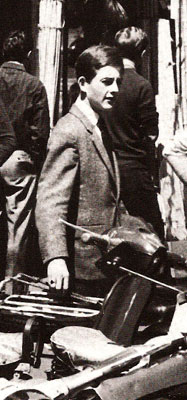
Well, thanks again for sharing those tales of sourcing clothing and tailoring around London, just to return to that subject, any other anecdotes on clothing and styles?
As I‘ve mentioned earlier, there were plenty of places to buy various items of clothing. As well as the ones I mentioned earlier, there were certain Army Surplus Stores that had certain items that became necessary for a brief time for some of the guys who rode scooters. As I said, one of these stores was at Manor Park; there was another one just past the Palais in Ilford. Both those places sold ’Yogi coats’. It must have been late 1962 because that’s when I got my Vespa.
This coat wasn’t a ’parka’ like the so-called ’mods’ are invariably pictured wearing. I can only describe it as a woollen coat with long strands, looked a bit like looser ‘astrakhan‘- probably US Army surplus. Yogi coats were before ‘parkas’ for wearing on the scooter. I never had a Yogi coat myself, although a friend called Paul Lucas did; he was the first person I saw wearing one. He had a silver-grey GS like me, although I had an accident on mine a few weeks after I got it.
A mate of mine called Mickey Jones, who had a Lambretta TV was riding along a country lane in Epping Forest near High Beech; suddenly, his engine seized up, locking his back wheel and he slid into me, knocking me off my scooter and into a ditch. I got a new one out of the insurance claim, but I remember I couldn’t ride my scooter to Clacton at Easter 1963, because I went down on the back of a friend who also had a TV.
As a matter of fact, there are two pictures of this guy in that Mods book – his name was Johnny Hassell. He lived near me in Manor Park. One photo was taken down Carnaby Street, and he’s standing on the right-hand side of the pic with one hand resting on his carrier. He’s got a Harris Tweed jacket on, and a dark tie.[p.25] He’s also in another picture in that book, taken at Brighton the year after, which I’m also in. I knew everyone in that picture. I went to school with the guy in white on the back of the scooter at the front – his name was Frany [Francis] Gaylor. The other guys came from Walthamstow and Leyton. I’m second from the left, looking away from the camera!! [p.89].
Anyway, after the claim, one which I could have sprayed a custom colour. I had it done white, with copper bubbles and front mudguard. I used to wear a leather jacket, two buttons with lapels like a suit jacket, single vent at the back; I also had a suede bomber jacket. I used to wear a polo neck under it or in summer a polo shirt – maybe a Fred Perry, but not necessarily.
You could also get those Italian fine woollen machine-knit shirts, the ones with various piping and suede trim, perforated collars with contrast wool stitching, all kinds of designs and combinations. I used to love those shirts – Jamaicans call them ’knits’ by the way. There was a shop in Aldgate called I think Alfreds, where you could get them.
They weren‘t cheap either. Anyway, the shop is still there, still selling a range of ‘casual’ clothes, which is pretty unbelievable. By this time we had discovered American jeans – not only red label Levis but Lee Riders [narrower leg] and another make called Cowboy Kings. These you could find down the Lane [Petticoat Lane street markets], mostly on Sundays, but some places were open in the week too. Working in the City, you could easily check places at lunchtimes. I had a pair of Levis and a pair of Cowboy Kings. These were all ‘shrink to fit’, so you got them a couple of sizes bigger than you normally wore.
One thing I could never understand with your peers and Levis…..for me there is nothing better than a pair of raw denim dark indigo Levis pre-wash (these days Japanese denim is arguably the best…they bought all of the original Levi looms). We tend to avoid washing them or get them dry cleaned to try and keep them as dark as possible but have read from numerous sources that after shrinking to fit, the jeans would undergo some serious distressing to make as faded as possible is this true???
I do remember washing jeans several times on the trot, to get them to lose colour. Distressing, that I never heard about, at least not then. Lee Riders used to fade really nicely, but Levis had a lot of dark blue in them, and only got to light blue after many many washes….in fact, I wanted mine to look older as soon as possible, without getting them frayed or worn.
Well, that’s encouraging!!! I was always horrified of tales of taking scrubbing brushes straight to the knees to wear and fade them.
Final Question, Prince Buster ‘Blackhead Chineyman’, Derrick Morgan comes back with ‘Blazing Fire’. Who won?? A draw not accepted?
Well…..I guess it depends – Buster wins if bombast is your thing, but Derrick wins if sly humour appeals to you. Derrick told me that way, way back, he, Monty Morris and Buster would all sit in the back room of Buster’s shop ‘Buster’s shack’ and write songs together. That is the origin of Buster saying that Derrick ‘took my belongs and give to your chiney friend’ because Buster saw the work as belonging to all three of them. But Derrick kept his own stuff for himself…..
I didn’t know the history behind it, I’ve always thought as retorts go ‘blazing fire’ was a fair effort but in that context, the Prince surely wins!!
Well, Steve, I cannot thank you enough for your time and for giving us all, your inspired and insightful answers. Instead of Derrick Morgan, this could quite easily have become a 96 page Steve Barrow interview, I’ve just thought of another two questions as I’m typing this!
….Steve mentions walking down Luke Lane with Prince Buster, Steve’s interview with the Prince can be found on www.bloodandfire.co.uk. Anyone wishing to delve into the blood and fire catalogue better hurry – the label ceased trading in June 2007 and shows no signs of being re-activated since then.
A good starting point might be the Congo’s ‘Heart of the Congos’, basically a timeless LP: angelic harmonies with Lee Perry’s production at its peak. Also, check out the Phase One label comp ‘Children of Jah’ (dedicated to Roger Eagle) with great vocal harmonies by the Chantells and killer tracks by Lopez Walker. Or you can’t go wrong starting at the beginning, with the first release ‘If Deejay Was Your Trade’.
I’d also forgotten about one that’s already been mentioned, the four-CD set released in 1993: Tougher Than Tough: The Story of Jamaican Music, a lovely package that really encapsulates the attention to detail that you get with all of Steve’s work: great design, great sleeve notes and that’s even before we get to the great selection of tunes.
Steve’s recent venture, the Equalizer record label focusses on Jamaican deejays. The first release fronted a set by General Echo, which captured arguably the leading deejay from the birth of ‘dancehall’ music in 1979-80 voicing over excellent ‘Manzie’ Swaby-produced rhythms. Now nearly thirty years on, this is a reggae genre rapidly becoming de rigueur amongst collectors.
However, these days Steve is in his own words ‘retired’ but currently engaged in selling a few of his old records through Bob Brook’s ‘Reggae Revive eBay site.
Thanks again, Steve.
You’re welcome Doug – didn’t realise we’d met at that club in Manchester with ‘Pone’
Well……I was just a fresh-faced pickney!!

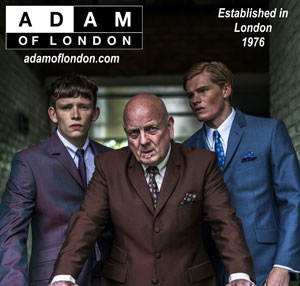
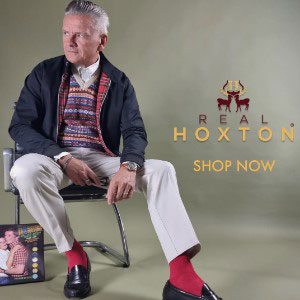
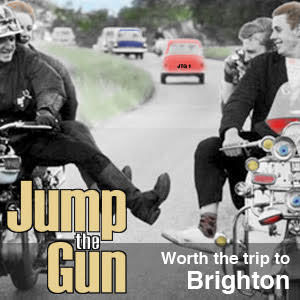
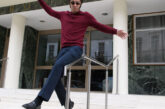
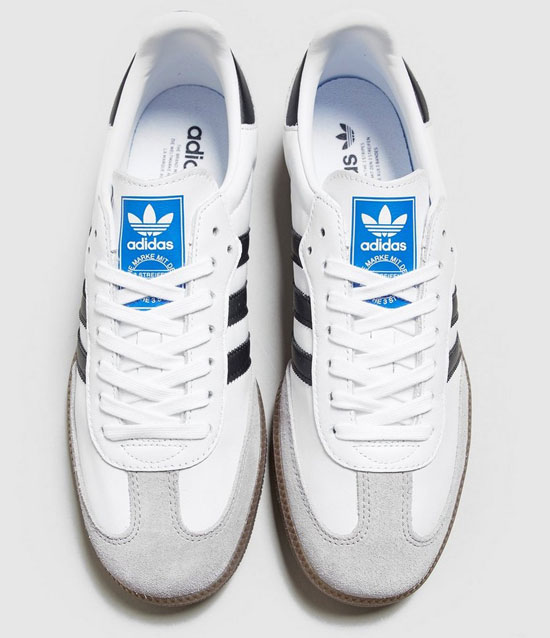
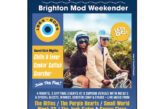
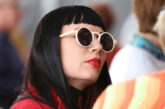
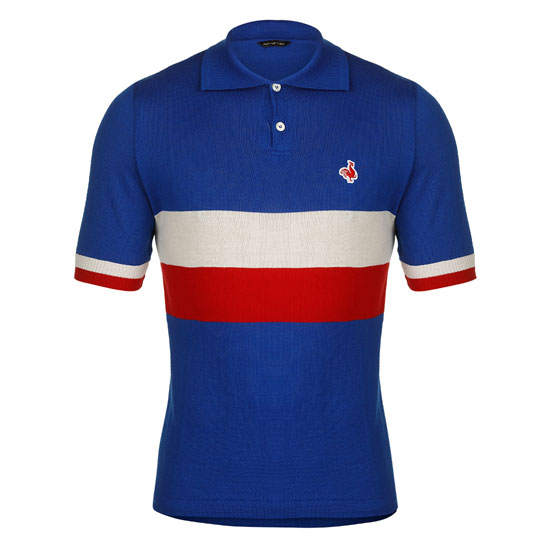
Maecenas sed diam eget risus varius blandit sit amet non magna. Donec sed odio dui. Morbi leo risus, porta ac consectetur ac, vestibulum at eros. Maecenas sed diam eget risus varius blandit sit amet non magna.
One of the best pieces on mod you’ll find online. Great article by Doug.
Fantastic piece here.Well done all.
I really enjoyed reading this, such a great insight
Loved this interview,remembered the first photo from a Mod photo book in the 80’s,I was aged 12.
Hi sorry but the mocha was a mod cafe the rockers cafe was further up the road on the corner the square ring was a coffee bar in upton lane owned by frank price a wrestling promoter it had all the local hard boys in there I won’t mention any names and the upper cut was the forest gate skating rink before the walker brothers got their hands on it .i haven’t read all your article yet but will catch up with it over the next day or two ill get the name of the rockers cafe for you
Hi Si – I still remember the Mocha – just past the junction of Green lanes with Ilford High Road as being a rocker hangout. Maybe it was on the few times I went there, or maybe it wasn’t particularly ‘modern. I’m talking about 1962 here…
As for the Square Ring coffee bar, the one that I’m talking about was definitely in Romford Road, Manor Park, right opposite the junction with Little Ilford Lane, on the other [northern] side of the road. I lived about 300 yards from there, in Wolferton Rd off Little Ilford Lane. So far as I knew that Square Ring was owned by a guy named [Joe?] Lucy [Lucie?] who also had a [boxing] gym above the Ruskin Pub in High Street North East Ham. The one you refer to, in Upton Lane, I never knew about.
take it easy
Steve Barrow
Sorry Steve
I’m talking about 64 for the square ring in upton lane and the rocker cafe also 64 I seem to remember the rocker cafes names started with a c can’t for the life of me remember the name at the moment it will come to me though will have to get back to you on it
I lived in forest gate it’s not the same now moved out a while ago bet your not in that neck of the woods now either
Later simon
The
Hi Simon – yes I moved out of Forest gate only recently – in June 2013 to be exact. When the property prices start to go crazy, we decide – now or never!
I still have family there – my brother lives near to Wanstead Flats, off Capel Road still. We used to live in Avenue Road, but sold that gaff and moved to Weston-super-mare near Bristol. A lot quieter here….! We lived in Avenue Road Forest Gate from 1994 – before that I lived in Upton Lane [in Joseph Lister Court opposite W Ham Park], before that, in Plaistow [Smiths Point], before that in Hume Point in Custom House [now demolished], and before THAT, in Seymour Road next to the Boleyn Ground ! Before that, other places in east London – Stratford, Woodford, most of my life, except for the time abroad, in that part of east London/ Essex…..
I guess Simon that NOTHING is the same now mate….but that’s life!
easy
Steve B
Hi Steve
The rockers cafe was the musketeer on the corner of Francis rd and high street
After it closed as a cafe I think it was something to do with wrought iron does it ring a bell
As I said the square ring in upton lane was owned by frank price and he used to promote the wrestling at ilford baths during the week I can’t remember the night though
Si
Manor Park became part of London at the same time Ilford did, 1965.
But it was always “Manor park E12” according to the Post Office. When I grew up there, Ilford was ‘Ilford, Essex’, and Manor park was part of East ham – it’s now part of ‘Newham’. The part I grew up in was known originally as Little Ilford, and I lived just off Little Ilford Lane in Wolferton Rod and Dersingham Avenue. .
Granted. But as the Royal Mail will tell you, postcodes are postcodes not accurate geographic references. For instance, the northern part of the E4 postcode is not in London though it is covered by the London post town. Offically it is in Essex, but the post town is London. That was the case in the county boroughs of East Ham & West Ham prior to 1965. Now those areas, which are now both in the London Borough of Newham, & Ilford which is in the London Borough of Redbridge are officially London & disconnected from Essex.
I understand that many people view postal areas as official geography so it’s unsurprising that you consider yourself to have grown up in London when infact it was Essex at the time. This confusion has taken place in reverse in places like Ilford & Romford. They’ve both been in London since 1965, but because many people have written Essex on their addresses since then, some people still view those areas as Essex even 50 years after they’ve ceased to be. The irony is there was no need to write Essex on either an Ilford or Romford address when they actually were in Essex, because they’re both special post towns. If you check any Ilford or Romford address today on Royal Mail’s address or postcode finder, Essex will not be part of the finished article. Interestingly, until the 2nd half of the 19th Century both Ilford & Romford came under the London post town.
Apologies to whoever posted about this of late and had comments removed – that was down to a moderating problem at our end. Feel free to post again re Londn / Essex if you want to.
Fact is what is now Newham only left Essex in 1965. That said, East Ham, & West Ham were County Boroughs, which means they ran their own affairs not Essex County Council. Thurrock Borough is in a similar situation today. Is Thurrock Essex or not? Whatever the answer, for the time being anyway, it’s clear that Thurrock is not in London.
Postal addresses are not official locations, though many people treat them as such. But did you know that until the mid-19th Century both Ilford & Romford came under London E postally? Neither place was officially in London til 1965, the same time as Manor Park.
I see you removed my comment. What’s the problem with it Essex Boy?
Yeah yeah you’ll remove this comment too, but it don’t stop the fact Manor Park was Essex til 1965.
just great
I used the mocha . I had a vespa 150 gs silver and lots of chrome. My name is Allan Spreckley Post me on here if you remember me.
Nice story not very accurate though some of it .would have been a good read with a bit more research
How can an interview about someone’s life need more research? He knows his life story, he doesn’t need to research it.